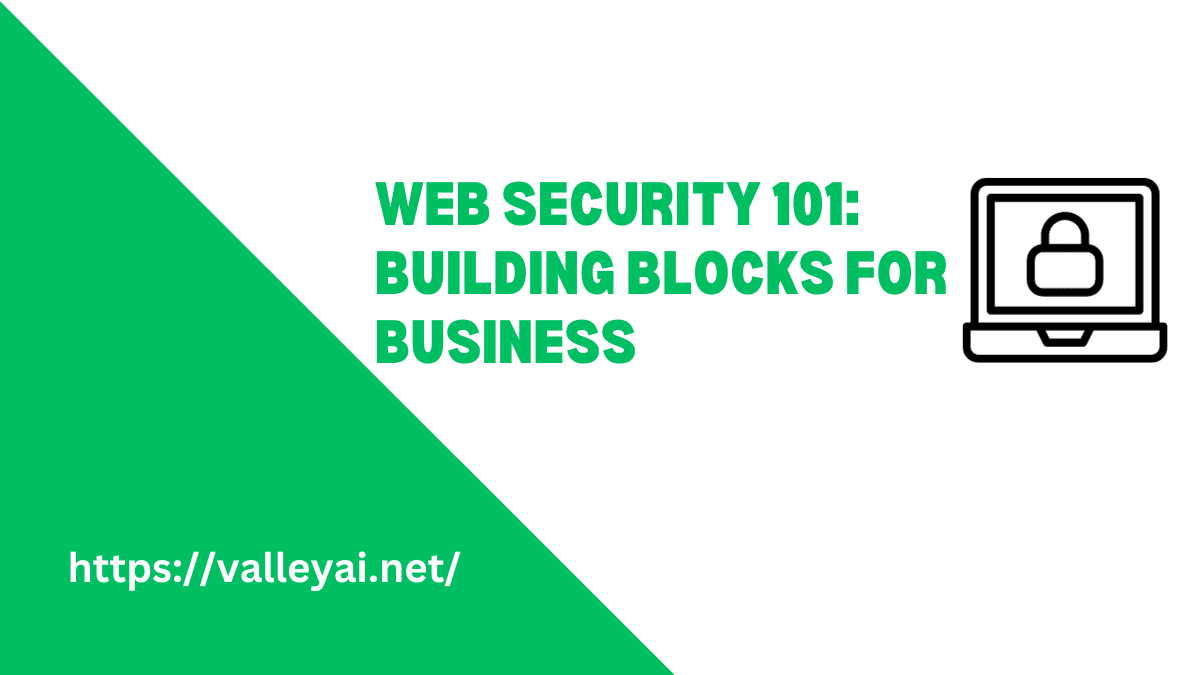In today’s digital era, businesses rely heavily on their online presence to interact with customers, deliver services, and facilitate transactions. Yet, this digital exposure also exposes them to a plethora of cybersecurity threats. To safeguard their digital operations, companies must grasp the fundamental principles of web security.
This article, delves into the core elements of Web Security 101 that businesses should employ to protect their online assets effectively.
SSL Certificates: The Bedrock of Trust
At the heart of web security lies Secure Sockets Layer (SSL) certificates. These certificates encrypt data as it traverses between a user’s web browser and the website’s server, ensuring that sensitive information remains confidential. SSL certificates also instill trust in users, signified by the padlock icon in the browser’s address bar. Google also rewards SSL-secured websites with better search engine rankings.
Routine Software Updates: Shielding Against Vulnerabilities
Software vulnerabilities present a common entry point for cyberattacks, often targeting outdated software with known weaknesses. To fortify your website, it’s imperative to regularly update your content management system (CMS), plugins, themes, and other software components. This proactive approach aids in patching security gaps and bolstering your website’s resilience against known threats.
Robust Password Policies: Gatekeepers of Access
Passwords continue to play a pivotal role in security. Implementing stringent password policies for your website and internal systems is vital. Encourage employees and users to craft intricate passwords and periodically change them. Consider the incorporation of multi-factor authentication (MFA) wherever feasible to add an extra layer of protection, mitigating the risk of unauthorized access even if passwords are compromised.
Web Application Firewall (WAF): Defending Against Threats
A Web Application Firewall (WAF) serves as a dedicated security solution that filters incoming traffic to your website, blocking malicious requests and attacks. It functions as a barrier between your website and potential threats like SQL injection, cross-site scripting (XSS), and Distributed Denial of Service (DDoS) attacks. Configured appropriately, a WAF can significantly bolster your website’s security.
Regular Backups: Preparing for Contingencies
Data loss can be catastrophic for any business. Regularly backing up your website and data is an essential precaution. Automated backups ensure swift recovery in the event of a cyberattack, hardware failure, or inadvertent data deletion. Store backups securely in offsite locations to effectively mitigate risks.
Finding Your Domain: Elevating Your Online Presence
Having the right domain can be a game-changer for your web presence. There are various benefits, such as credibility and added brand value to your online identity. If you’re having trouble getting the domain that would work best with your business, you can easily acquire a premium domain by reaching out to brokers.
Security Audits and Testing: Continuous Vigilance
The process of security audits and testing is an ongoing one. Regularly scan your website for vulnerabilities using tools and services like vulnerability scanners and penetration testing. Engaging ethical hackers, known as white-hat hackers, can help identify potential weaknesses and proactively address them.
Employee Training: The Human Element
A significant number of security breaches stem from human error. To counter this, comprehensive employee training in cybersecurity best practices is imperative. Equip your staff with knowledge about recognizing phishing scams, social engineering tactics, and suspicious activity. An informed team can serve as a robust defense against cyber threats.
Incident Response Plan: Ready for the Worst-Case Scenario
Despite best efforts, security incidents can still transpire. Having a well-defined incident response plan in place is critical. This plan outlines the steps to follow when a breach occurs, from identifying the incident to mitigating damage and informing stakeholders. A well-prepared response can minimize the impact and recovery time.
Monitoring and Alerts: Real-Time Threat Detection
Continuous monitoring of your website’s traffic and server logs allows for the real-time detection of unusual or suspicious activity. Implement security information and event management (SIEM) tools to automate threat detection and receive alerts when potential security breaches occur. Swift response to emerging threats is vital to minimizing harm.
Compliance with Regulations: Legal Obligations
Depending on your industry and location, various data protection and privacy regulations may apply to your business. Compliance with these regulations, such as GDPR, HIPAA, or CCPA, is not only a legal obligation but also a critical facet of web security. Non-compliance can result in substantial fines and damage to your reputation.
Conclusion
Web security is an ongoing endeavor that demands perpetual vigilance and adaptation. Establishing a robust security foundation for your business’s online presence entails SSL certificates, regular updates, stringent password policies, WAFs, backups, audits, employee training, incident response plans, monitoring, and compliance. By implementing these core components, you can significantly enhance your web security, safeguard your digital assets, and foster trust with your clientele.
- SaaS Growth Strategies: A Complete Guide for Long-Term Success - May 18, 2025
- How Data Science Is Powering Business Decisions in 2025 - April 17, 2025
- The Future of Data-Driven Networking: Trends and Innovations - March 12, 2025

